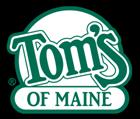Who Will Win The Battle To Redefine The Workplace?
There is a largely unseen battle now raging in the workplace. It pits incumbent powers against emerging upstarts. On the one side are managers who covet the traditional employment deal – money, career progression and status - in return for a total commitment to playing the organizational game by traditional rules, e.g., long hours in the office, grueling travel, and an otherwise unquestioning willingness to do whatever the business requires. Only Type A's need apply.
On the other side is an emerging group of workers who are also highly ambitious but they are seeking a new kind of workplace deal that combines opportunities to perform at high levels, grow their careers and achieve financial rewards with an extensive array of flexible working and non-traditional employment arrangements.
The winner of this battle will determine whether the rules and mores of the workplace change dramatically or remain largely the same.
How is this battle currently unfolding? A newly released study, “Manifesto for the New Agile Workplace” describes the players in this fierce fight to define the workplace rules of engagement. It provides new insights into what different groups of knowledge workers think about their current “employment deals” and the changes in their working and emp loyment arrangements that they seek most.
loyment arrangements that they seek most.
Drawing on research conducted by an international team of experts from Career Innovation, a think tank based in
The executive summary of the report is available free. The full report, written by yours truly and Jonathan Winter, Managing Director of Career Innovation can be purchased for US$110.
The report findings draw on several streams of research including an online survey entitled ‘Redesigning Work’ that attracted responses from more than 2,000 ‘knowledge workers’ – employed, self-employed and not currently working – across 32 countries. Unlike many previous studies of flexible working, this survey asked respondents to indicate not only their preferred and ideal ways of working but the trade-offs and compromises they would be willing to make in order to achieve this.
Unhappy to Be Here
The Redesigning Work survey revealed shocking levels of dissatisfaction among the knowledge workers polled. Over fifty percent were dissatisfied with their ability to achieve work/life balance (56%), their sense of achievement from their work (55%), the way their skills are being used (54%) and their ability to gain new experiences (52%).
Not surprisingly, many of these frustrated knowledge workers see significant changes in their employment situations as the only hope of fulfilling their unrealized expectations. In total 55% rated a complete change of direction attractive, with “working for yourself” universally the most popular employment option.
These survey findings are startling, given the fact that the respondents are knowledge workers, many of whom are managers and/or working in a professional capacity. But there's more. When we ran regression analysis of the survey responses, five distinct groups of knowledge workers emerged, defined by their shared expectations about work and preferences for flexible and non-traditional working arrangements. Among these groups are the key players in the battle to redefine the workplace. These segments of the workforce also represent more precise targets for organizations to engage in developing more effective talent management strategies and devising new kinds of employment deals.
Traditionalists – Rulers of the Roost
Representing 20% of the survey sample, Traditionalists are the most willing to meet employers’ expectations of how they should work - they are highly motivated and many of them work long hours. Bucking somewhat the conventional wisdom that younger workers are not attracted by traditional corporate environments and employment deals, 57% of these individuals are under 40 yearsold and 23% are under 30. Traditionalists have high drive and ambition and have little need for flexible work options. They also have low interest in alternative employment options. Not surprisingly – Traditionalists are predominately male, mid-career managers. They are also the group most likely to stay with their current employer.
Careerists – Opportunists in Traditionalist Clothing
Another 20% chunk of the survey population is what we call Careerists. These individuals have moderate to high drive and ambition for their careers, but are not nearly as keen to meet their employer's expectations as their Traditionalist colleagues. They too are not attracted by flexible work options and even less to alternative employment options. Careerists appear to a large extent to be pursuing their own career agendas, typically within a large corporate context.
Flexers – Desperately Seeking Balance
As is apparent from their name, Flexers are highly attracted to flexible working and work-life balance. Representing one-fifth of the survey population, individuals in this group covet flexible work options and look favorably on alternative employment options as well. But they demonstrate a lack of willingness to meet employer expectations. Flexers have low to moderate levels of drive and ambition. Overall, this group is not happy - 36% are planning to leave their employers within the next twelve months.
Agile Performers – Role Models But The Most Likely To Leave
Agile Performers represent the biggest cluster of survey respondents (25%). This group is highly attracted to flexible working and alternative employment options. Agile Performers have very high drive and ambition and are very willing to meet employer’s expectations yet they are the most likely to leave their employers (43%). And contrary to the popular perception of older workers lacking ambition and willingness to change – 43% of agile performers are over 40 years old.
Fringers – Stuck Outside the Mainstream
About 15% of the survey respondents showed low interest in work and a distinct lack of career-orientation. We refer to these individuals as Fringers. They are neither attracted by flexible work or alternative employment options. Fringers have low to moderate willingness to meet employer expectations and low drive and ambition.
Will An Agile Workplace Emerge?
Despite all the rhetoric about continuous change and the dismantling of corporate hierarchy, traditionalist ideology still predominates the workplace cultures of many organizations. But almost half of the respondents to our survey can be characterized as part of what we call the emerging agile workforce – highly attracted to non-traditional working arrangements. These individuals are also the most dissatisfied with traditional employment deals and the most likely to leave their employers. This presents a potentially damaging situation for employers. Many of these workers, particularly the Agile Performers, exhibit a healthy mix of ambition and agility that is precisely what many companies desperately need to thrive in today’s highly volatile business environment. However, this situation also represents a tremendous opportunity because many of these workers would stay and become more engaged if they were allowed to work in a more agile manner. In fact, 48% of Agile Performers and 46% of Flexers say they would be willing to give up some of their pay to achieve their most desired flexible employment option.
Can a way be found to create more attractive deals for Agile Performers and Flexers while keeping more traditional high performers happy? That’s the challenge that corporate leaders and emerging agile workers must meet head on. It can only be tackled successfully through honest dialogue, good faith negotiations and willingness to experiment with new kinds of employment deals that trade off commitments to increased performance in return for greater worker flexibility and freedom.
Those organizations and individuals savvy enough to do these things will lead the way in creating tomorrow's high-performing workplaces. Businesses win by retaining a greater number of motivated, diverse and high performing agile workers. These same workers win by attaining the employment deals they desire most to pursue their career and personal aspirations.



